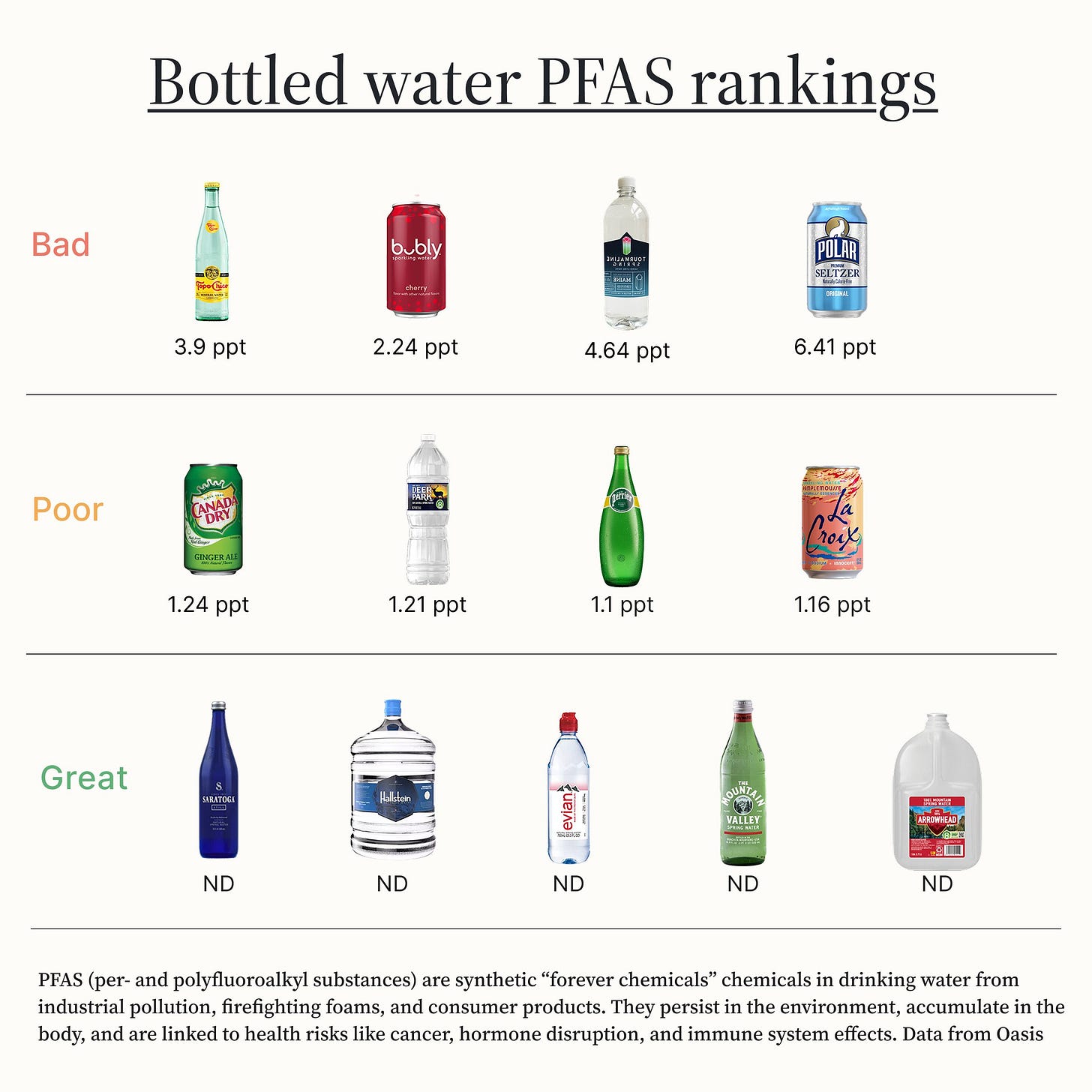Nat Friedman, ex-GitHub CEO and Billionaire, started Plastic List after concerns over Endocrine Disrupting Chemicals (EDCs) in his food. He banded a team of 4 to test 300 food products. It took half a year and cost $500,000.
They detected plastic chemicals in 86% of the foods tested.
Chemicals were found in every baby food, prenatal supplement, human breast milk, yogurt, and ice cream tested. They also found plastic chemicals in each product tested from Starbucks, Shake Shack, Gerber, Chobani, Straus, Celsius, Blue Bottle, RXBAR, Coca-Cola, Tartine, and Ghirardelli.
Plastic chemicals are also in almost all the upscale products tested; like raw milk and beef from the farm, 22 organic foods, and 20 ‘healthy’ groceries from Whole Foods. O Organics eggs were the only safe bet in the egg category.
Hot food which spend 45 minutes in takeout containers have 34% higher levels of chemicals than the same dishes tested directly from the restaurant.
None of the food brands want this stuff in their food (obviously). In Nat’s opinion, the most likely source of contamination is the suppliers.
The most surprising finding to me was that Whole Foods organic steak is basically 99% microplastic lol, here’s an interesting theory why:
For you Boba lovers, at the very top of this list is Boba tea from Boba Guys (tea and pearls) - 1 Boba Tea equals 1.2 years of ‘safe’ BPA consumption.
90% of water contains harmful toxins. Oasis combines verified brand lab reports + internally funded tests and community contributions to test water.
I consult their insta every time I’m out buying a bottle of water.
BTW, please stop drinking Celsius - I beg of you.
I found this non-profit after Dr. Mark Hyman posted on insta and ruined my life by disclosing that every protein powder in my house contained lead.
Clean Label Project is featured in Harvard’s Health Journal, so they seem to be legitimate.
My go to clean protein powder is Sprout Living, specifically their single ingredient pumpkin seed powder (ton of zinc for glossy elastic skin).
My ‘longevity tech bro’ friends swear by this app. You can scan barcodes for food and cosmetics, and see instant analyses on over 6 million products.
The evaluation system is based on three key components:
1) nutritional quality which considers things like calories, sugar, salt, protein (60% of score)
2) presence of high-risk additives including preservatives, food coloring, titanium dioxide etc (30% of score)
3) organic / bio certifications (10% of score)
Every product gets a color code: red (bad), orange (mediocre), yellow (okay), green (good). It flags concerning additives like carrageenan, titanium dioxide, food dyes and suggests healthier alternatives when products score poorly.
I threw away all my Cera Ve products after using Yuka :’)








